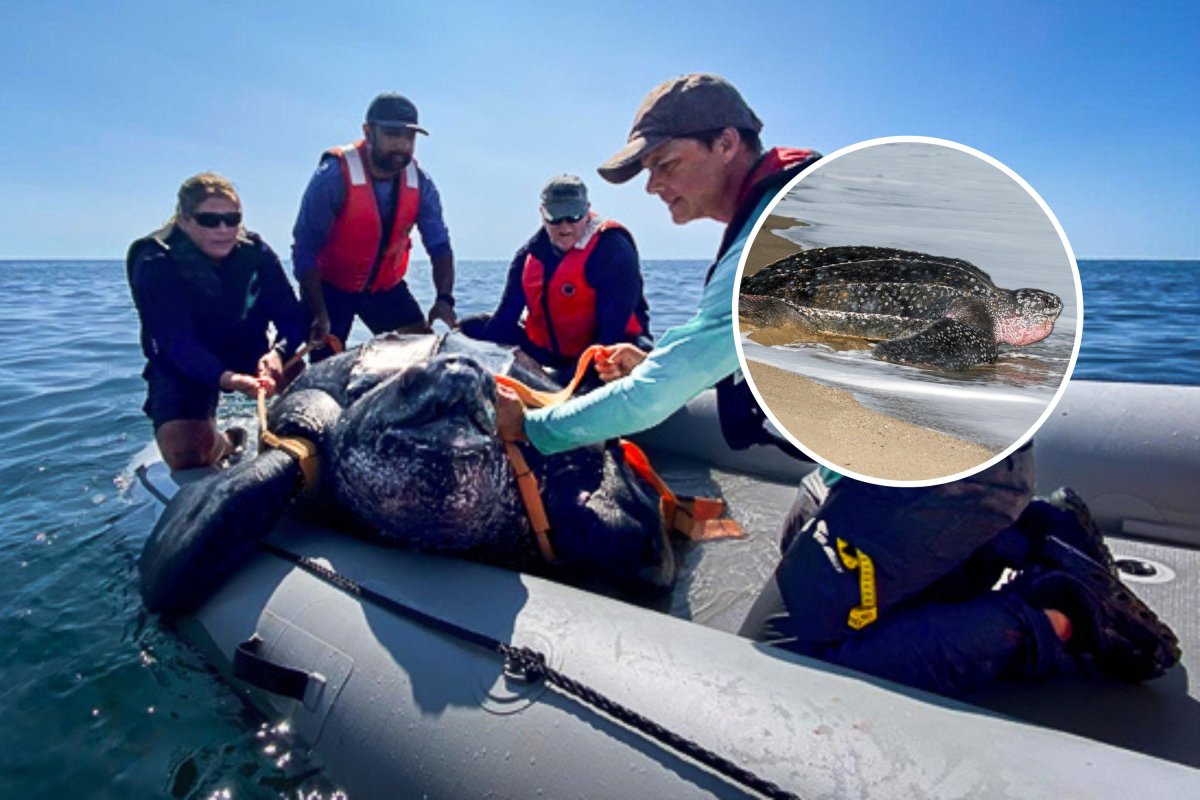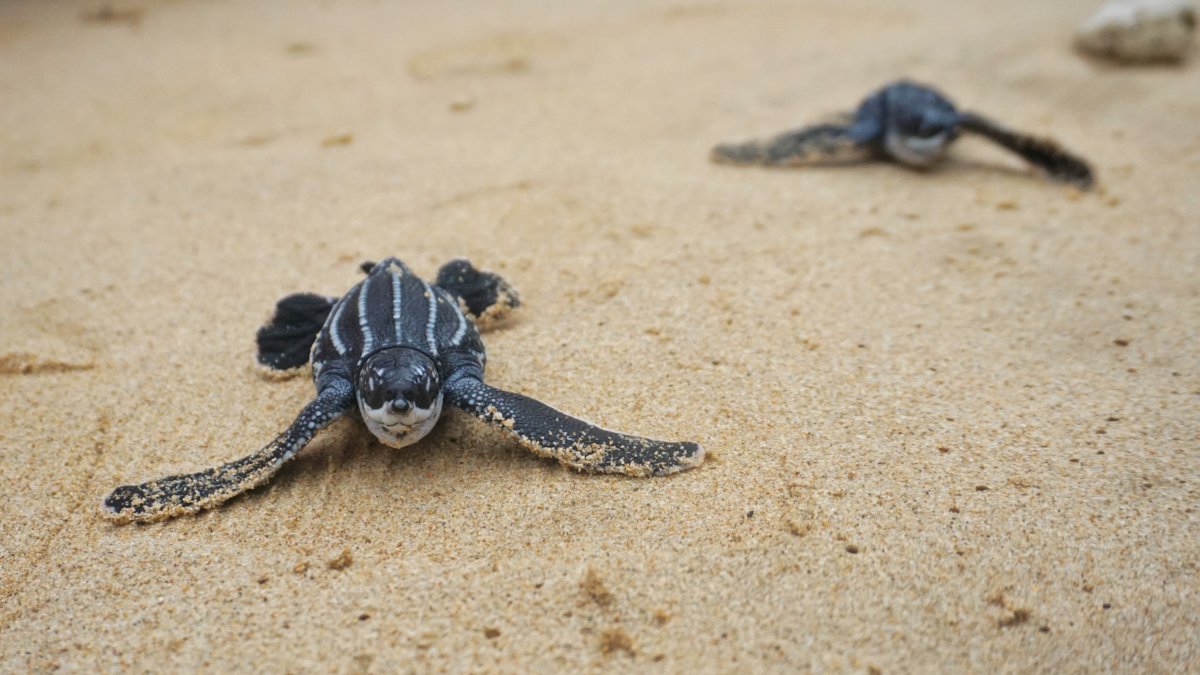Researchers have found new feeding grounds for endangered leatherback sea turtles along central parts of the U.S. East Coast.
Before this discovery, scientists knew that the turtles migrated between their feeding grounds in the waters off Nova Scotia and New England in the summer and their breeding grounds off the Mid- and South Atlantic Bights in the colder months, but they weren't sure where they went in between and what they did there.
Now, NOAA Fisheries researchers have discovered that these leatherbacks travel via locations like Cape Hatteras in North Carolina and Delaware Bay, where they feed, according to a new study in the journal Frontiers in Marine Science.

Leatherback turtles are the largest species of sea turtles, measuring 5-6 feet long and weighing 750-1,000 pounds. They are the only species without a scaly shell, instead being covered by a layer of tough, rubbery skin, hence the name "leatherback."
They are primarily jellyfish eaters, but may also consume other soft-bodied marine organisms like tunicates and salps, and can descend to depths of over 3,000 feet to hunt for food.
Leatherback turtles are listed as "vulnerable" on the International Union for Conservation of Nature (IUCN) Red List, and are protected under the Endangered Species Act in the U.S. Their populations are thought to have declined by around 40 percent over the past three generations, with each turtle living for about 50 years.
Leatherbacks are known to swim from the South Atlantic Bight—between North Carolina and Florida—and the Mid-Atlantic Bight—between Massachusetts and North Carolina—up to the northern waters to feed during the summer, going southwards again during the winter months.
NOAA Fisheries researchers, among others, tracked 52 leatherbacks using satellite tags attached to the animals off the coasts of Massachusetts and North Carolina. The tags let the researchers know how deep the turtles dove and for how long, indicating if they were feeding or not. According to the paper, the turtles were seen to be performing feeding behavior off the coast of New England during the late summer, which is expected, as this is when some of the turtles' favorite prey is in abundance.
However, they also found that the turtles were feeding a lot further south than anticipated, in Delaware Bay and Barnegat Bay in New Jersey, in the waters of the Mid-Atlantic Bight. This suggests that the Mid- and South Atlantic Bights are important foraging areas for the turtles during their migrations, and are not only used for breeding.
"We were really excited to find evidence that the Mid-Atlantic Bight serves as a major foraging ground for leatherbacks migrating along the continental shelf," Chris Sasso, a NOAA Fisheries researcher, said in a statement. "We knew the turtles migrate through this area, but with these depth-logging satellite tags we were able to track more fine-scale behaviors to see what they were actually doing—basically stopping for snacks along the way."
They also witnessed bizarre behavior in a few of the turtles—two of the males were seen traveling from the north to the south as usual, but suddenly turned back and headed north again. This shows that not all males head towards the mating grounds every year.

"We previously thought that males returned to nesting beaches each year, since they may not require the same energy budget as females who take 2–3 years to return," study author Mitch Rider, a researcher at the University of Miami, said in the statement. "Our data show that several males spend the winter elsewhere—suggesting the opposite. This is important information as this will impact estimations of adult sex ratios and subsequent population dynamic models for each nesting population."
This research may help scientists predict how changes in the climate will affect these endangered turtles. They intend to collect more data about the threats the turtles face in their daily lives, and hope to attach cameras to the turtles to study them further.
Do you have a tip on a science story that Newsweek should be covering? Do you have a question about leatherback turtles? Let us know via science@newsweek.com.
Uncommon Knowledge
Newsweek is committed to challenging conventional wisdom and finding connections in the search for common ground.
Newsweek is committed to challenging conventional wisdom and finding connections in the search for common ground.
About the writer
Jess Thomson is a Newsweek Science Reporter based in London UK. Her focus is reporting on science, technology and healthcare. ... Read more
To read how Newsweek uses AI as a newsroom tool, Click here.








